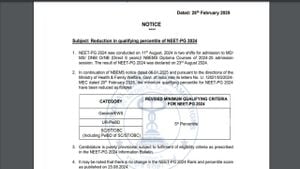The Polish Air Force has recently deployed fighter jets to secure its airspace amid intensified Russian missile strikes targeting Ukraine. This move is part of Poland's broader efforts to bolster its defense capabilities and safeguard its borders, with the Operational Command of the Polish Armed Forces confirming these actions.
Following reports of Russian attacks, which involved the launch of seven missiles and over 200 drones across Ukraine, Poland took swift measures to protect its own territory. According to Ukrainian sources, six missiles and 133 of the attacking drones were intercepted, though 79 drones managed to reach their intended targets. The wave of airstrikes resulted in injuries, including one incident where a 44-year-old woman from the Kyiv region sustained leg injuries and was hospitalized.
Poland's proactive stance isn’t new; the country has been vigilant about its airspace since the onset of the conflict. NATO ally Poland has previously deployed aircraft to monitor its borders following incursions characterized by increased Russian military activity, with incidents dating back to March last year, when Polish forces detected a Russian cruise missile over its airspace. The recent surges of attacks have prompted Poland to announce, through social media platforms like X, their close monitoring of the situation.
The day after the heavy bombardment, air raid sirens echoed across Ukraine, marking the anniversary of the escalation of hostilities three years ago. This surge highlights the fragility of security in the region, with Poland maintaining its commitment to defending NATO’s eastern flank.
Currently, the extent of casualties and damage caused by the latest Russian aerial attacks on Ukraine is still being assessed. Reports from the Russian Ministry of Defence indicate the destruction of 19 Ukrainian drones during their recent offensive operations, yet details about the damage inflicted on the ground remain sparse.
This situation reflects the continued volatility of geopolitical relations and the reliance on military preparedness by nations close to conflict zones. Poland's actions are not only defensive but also demonstrate its solidarity with Ukraine during these challenging times. NATO’s involvement remains pivotal, as collective defense mechanisms are activated should tensions escalate even more.
Military analysts note the strategic importance of air superiority and the impact of even minor incursions or incidents along the borders. Poland has committed to watching its airspace closely, taking precautionary measures to avert potential threats and protecting its citizens.
The existence of Russian military maneuvers poses serious strategic concerns, and Poland’s proactive air defense strategy is likely to remain in effect. The military’s operational readiness reflects not just on individual nations but on the collective security framework within NATO.
Looking back at past incidents allows one to appreciate the continuous evolution of defense protocols. Poland, as part of NATO, has found itself needing to adapt rapidly as the situation evolves, balancing domestic security interests with broader alliance responsibilities. The central aim revolves around deterrence: reducing the risk of spillover effects from the conflict and ensuring the stability of the region.
Widespread international fears about the ramifications of Russian aggression play out through military posturing and readiness. Poland's commitment to its airspace reflects historical lessons on the necessity of vigilance, and how nations respond to aggressive posturing by neighboring states.
Governments worldwide, particularly those bordering Ukraine, maintain heightened alertness as the conflict shows no signs of resolution. Poland's actions serve as not just a buffer but as a reflective measure of collective international response and solidarity.
With the stakes so high, the attention turned toward potential diplomatic avenues, yet military readiness appears to take priority for many involved, particularly for nations directly facing Russian challenges.
The Polish Air Force’s recent deployments confirm its unyielding stance amid precarious circumstances, with the country standing ready to engage should threats escalate. That vigilance, bred from necessity, highlights the complexity and urgency of the chessboard across Eastern Europe as larger powers continue to flex their muscles.
Moving forward, it remains imperative for nations like Poland to adapt to the realities on the ground and remain prepared for any developments, ensuring they can safeguard their citizens and integrity amid regional unrest.



